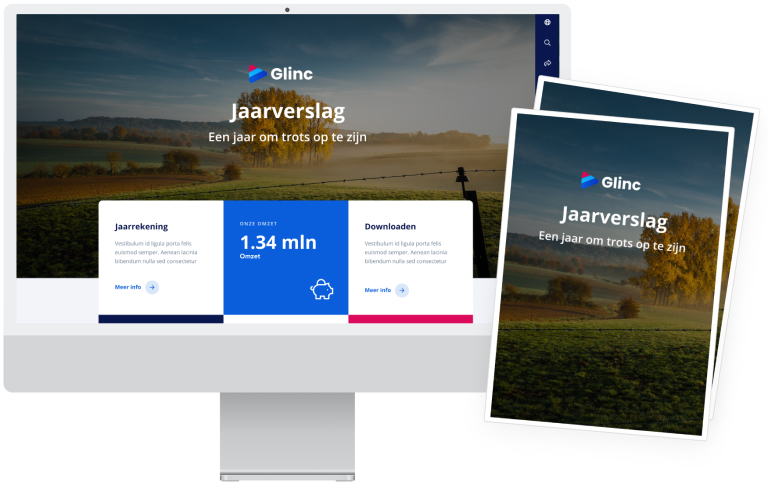Systems integration - Electrons and molecules start working together
Electrons and molecules start working together
System integration
On the way to a climate-neutral energy system, operators of transmission, distribution and storage systems for electricity, gas and heat must work together as effectively as possible to ensure that, at all times, energy consumption is accompanied by the lowest carbon emissions possible. Gas continues to play an important role. Given that natural gas can carry a lot of energy, making it cheap to store and transport, it can be used for electricity generation during periods when the wind is not blowing and the sun is not shining. Natural gas will slowly but surely make way for green gas and hydrogen.

II3050
Gasunie, TenneT and the regional network operators have been working together for several years on the Integrated Infrastructure Outlook 2030-2050 (II3050), which shows what the carbon-neutral energy supply of 2050 could look like. For each of the scenarios described in II3050, we determine the impact on flexibility and infrastructure (development paths for the period 2030-2050) and the consequences in terms of costs, space and feasibility (human resources and raw materials/feedstocks). An intensive process involving the 14 industries with the highest volume of emissions and the six industry clusters has provided insight into the sustainability strategies of the industry from 2030 to 2050. The final report of the second edition of II3050 will be published at the end of 2023.
Gasunie’s InfraVision
The II3050 scenarios and development paths form the basis for InfraVision, Gasunie’s vision of the probable and the desired gas infrastructure in north-western Europe between 2030 and 2050. Renewable gaseous energy is indispensable for the transition of industry and power plants. In the InfraVision report, we provide a coherent picture of the development of transmission, storage, import and conversion of hydrogen, natural and green gas and CO2, and we describe Gasunie’s role in this. InfraVision can be developed further and given more depth by assessing its content against the scenarios in the next editions of II3050. We expect to publish our InfraVision report at the end of 2023, concurrent with the publication of the second edition of Integrated Infrastructure Outlook 2030-2050 (II3050).
National programmes
The Dutch government takes the insights from II3050 into account when making choices in its various programmes, such as the energy system programme (‘PES’), main energy structure programme (‘PEH’), national programme for making industry sustainable (‘NPVI’), exploration of offshore wind landing (‘VAWOZ’), and its multi-year energy and climate infrastructure programme (‘MIEK’). Gasunie provides input for these state programmes so that knowledge and learnings from II3050 and Gasunie’s InfraVision can contribute to the validation of system choices and considerations when making policy choices.
Offshore NSWPH
As part of the North Sea Wind Power Hub (NSWPH) programme, Gasunie worked together with TenneT and Energinet on Pathway, a first-ever global system design for offshore energy infrastructure. Published in 2022, this study once again demonstrates the need for system integration between hydrogen and electricity in north-western Europe. Pathway 2.0 will be published in 2023.
Energy weather report
On 31 October 2022, Dutch meteorologist Helga van Leur presented the first in a series of weekly energy weather reports in which, in a short video, she details the weather forecast for the coming week and the expected amount of solar and wind energy. She also gives the viewer tips on which days it pays to save extra on heating. The energy weather reports can be viewed at www.energieweerbericht.nu. This site shows the forecast for solar and wind energy and heat and provides advice on how to ‘move with the weather’. This site and programme are made possible by the Dutch Association of Sustainable Energy (NVDE), TenneT and Gasunie.

Data services
Gasunie develops strategic data services in the interest of the energy transition and system integration. Gasunie does not do this alone: we work on this together with partners such as TenneT, Nationaal Klimaat Platform, the Dutch Association of Sustainable Energy (NVDE), and Netbeheer Nederland. We have developed initiatives like EnergieOpwek, which provides insight into how much renewable energy is being generated, the CO2 monitor, which shows the CO2 emissions of our energy system, and Energieweerbericht, an ‘energy weather report’ telling when to expect a renewable supply of energy. These platforms go beyond us providing insight to enabling people to act according to these insights. For example, we, as a society, can reduce carbon emissions by using energy carriers when they are the greenest. In response to the increasing demand for our data we will be expanding our forecasts and further intensifying our collaboration with TenneT.

